Mango Season in Florida
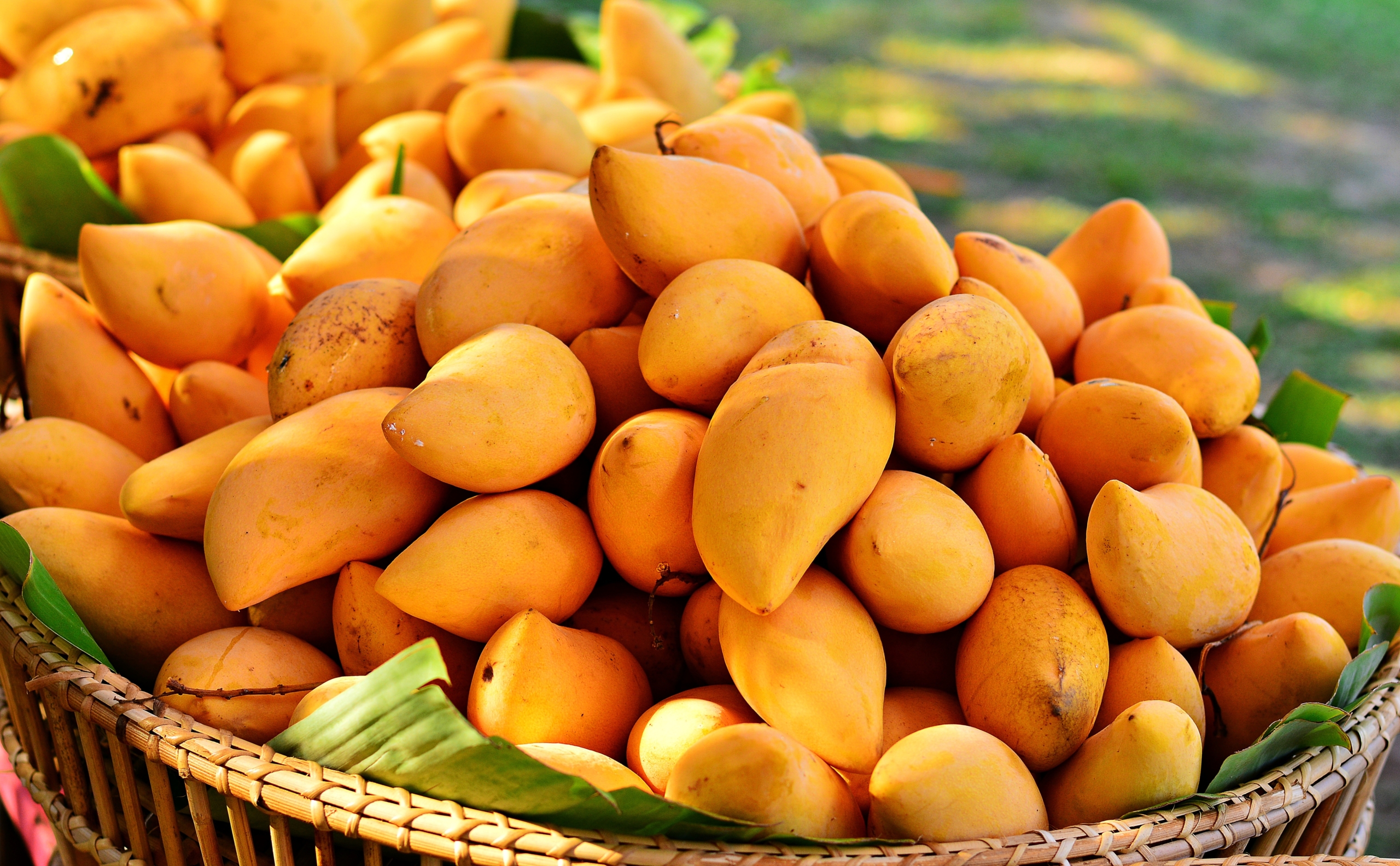
Mangos, the king of fruit, have an undeniable allure that draw us in with their vibrant colors, intoxicating aroma, and succulent taste. Mango season in Florida is a unique experience for fruit lovers, offering an unparalleled selection of tropical mango varieties that you can’t find anywhere else in the United States.
Let’s dive into Florida mangos and discover the magic of this tropical fruit that is beloved all over the world.
Florida’s Mango Season
When Is Mango Season in Florida and How Long Does It Last?
Florida mango season usually runs from May through October. During these warm and sunny months, South Florida becomes a mango haven as its orchards begin to produce tropical fruit; however, weather conditions, such as high temperatures, rainfall, and humidity, can extend or shorten the mango season.
South Florida boasts a long history and an impressive array of mango varieties, including the popular Tommy Atkins, Kent, Keitt, and Haden. South Florida is also the hub for many new and highly desirable mango varieties, including the Orange Sherbert, Ice Cream, Pina Colada and many more.
When & Where to Buy Mangos in Florida
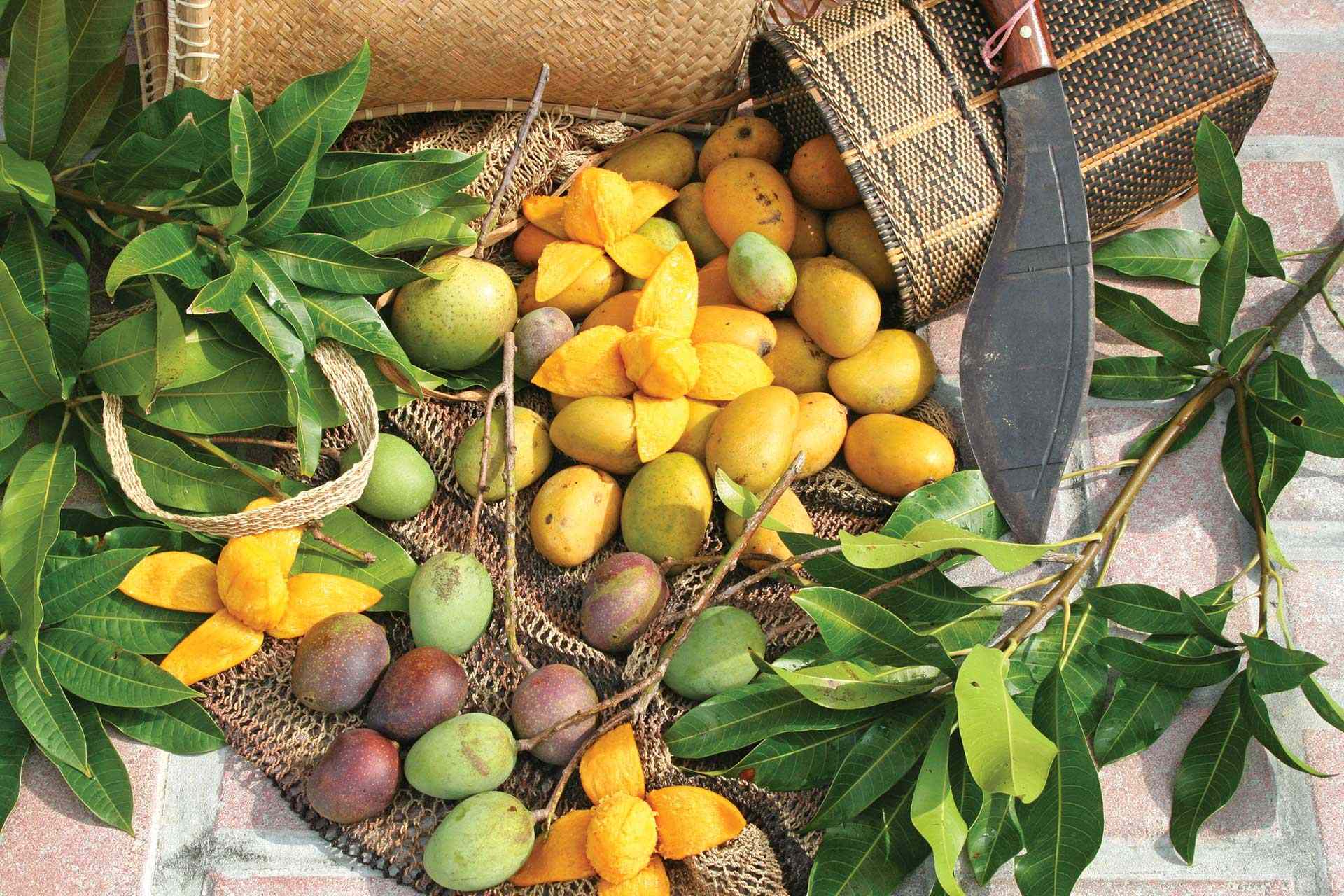
Mango varieties have different ripening schedules. For instance, the widely available Tommy Atkins typically ripens in May and June, while the Haden mango variety makes its appearance in June and July, and the Keitt mango fruits in August and September.
As the season unfolds, you’ll find different mango varieties become available at different times, providing a succession of tasty flavors that you can enjoy throughout the summer months.
Factors Affecting Mango Production
Florida’s mango production is determined by the weather of the season and the hard work of dedicated growers. Climate and soil quality are crucial elements that determine the success of a mango crop. The ideal conditions include warm temperatures, moderate rainfall, and humidity, as well as well-drained sandy loam soil.
South Florida’s mango growers have many challenges to overcome to provide consumers with mangos consistently. Mango trees are also vulnerable to diseases and pests, such as anthracnose and powdery mildew. Trees planted in light sand and limestone soils need periodic fertilization to ensure satisfactory growth and production of mangos.
Get Info About the 2025 Mango Festival at Fairchild in Miami!
Ideal Growing Conditions for Florida Mango Trees
Growing the perfect mango is an art that requires the right combination of sun, soil and a little bit of TLC. Mango trees in Florida flourish under full sun, moderate rainfall, and well-drained sandy loam soil. These conditions, coupled with warm temperatures and high humidity, create the ideal environment for a healthy and productive mango tree. To further enhance the growth and fruit production of mango trees, growers should also pay close attention to the specific needs of each variety. For instance, the Carrie mango thrives in USDA growing zones 9-11, and its average size at maturity ranges from 15-20 feet tall and 10-15 feet wide.
In general, a mango tree will grow best in South Florida, making mangos an ideal choice for cultivation in a Miami-Dade County yard. With the right care and attention, Florida’s mango trees will continue to provide you with delicious tropical fruits for many seasons to come.
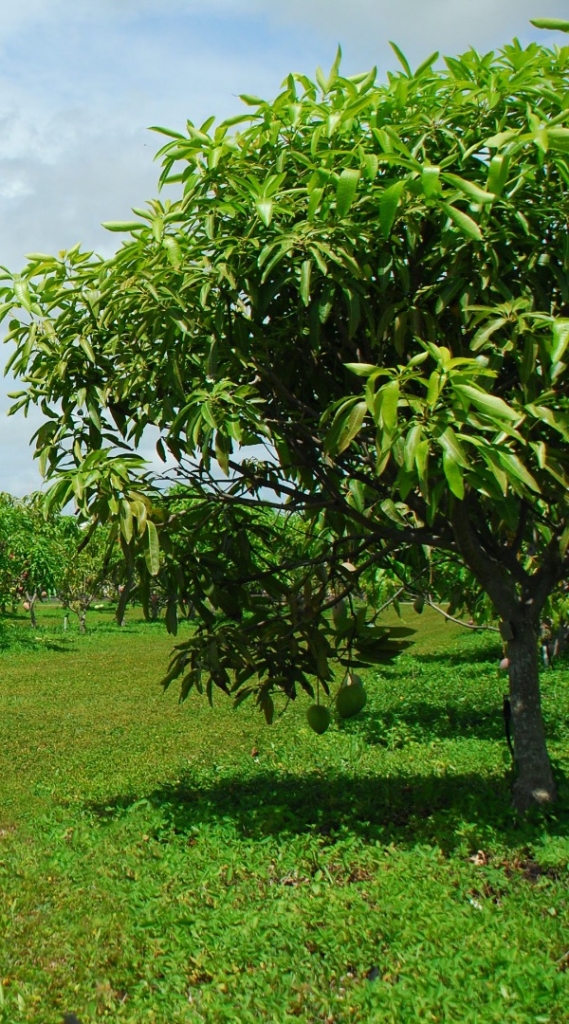
How to Enjoy Fresh Florida Mangoes
There’s nothing quite like the pleasure of eating a perfectly ripe, fresh Florida mango. To fully appreciate the variety of flavors and textures that these tropical gems have to offer, it’s essential to select the perfect mango, store it properly, and let it ripen to perfection.
But that’s just the beginning—the real fun begins when you get creative in the kitchen and explore the myriad of ways to enjoy these delicious fruits. From smoothies and salads to desserts and cocktails, there’s no end to the mouthwatering dishes you can create using fresh Florida mangos.
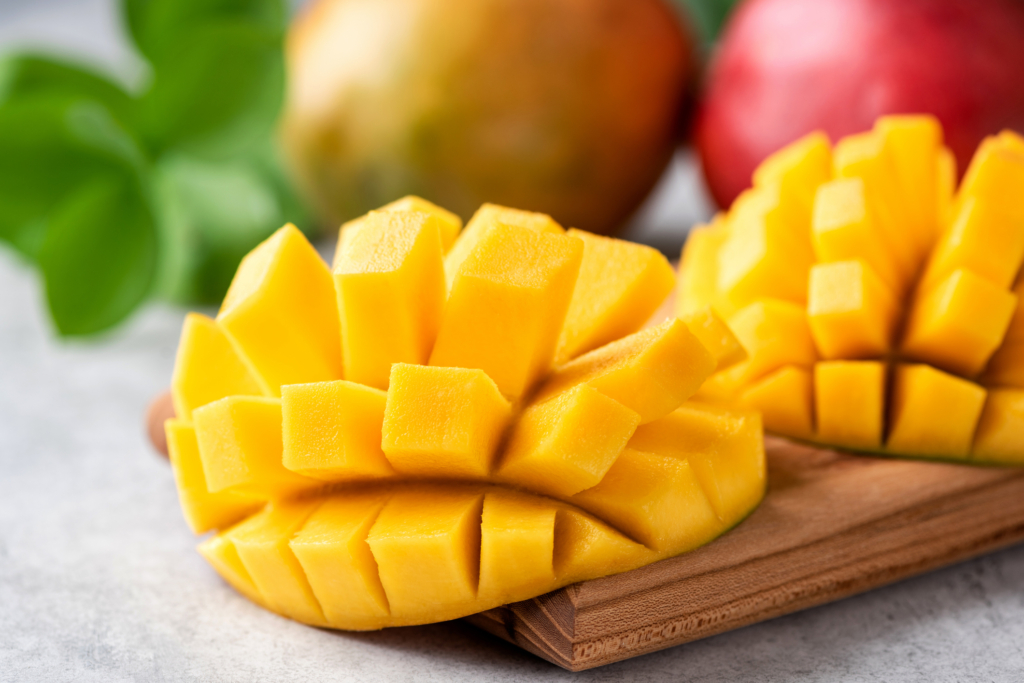
Selecting the Perfect Mango
Choosing the perfect mango is a sensory experience that involves more than just picking the prettiest fruit on the shelf. To find a mango that’s ripe and ready to eat, pay close attention to its color, texture, and aroma. Generally, flatter mangoes will be more fibrous and have less flesh. A full, plump, and round mango is a good indicator of quality fruit.
The mango should also give slightly when squeezed, signaling that it’s ripe and ready to be enjoyed. Finally, take a moment to smell the mango—a sweet aroma is a telltale sign that you’ve found the perfect fruit.
With these tips in mind, you’ll be well on your way to selecting the finest mangoes Florida has to offer.
Storing and Ripening Mangoes
Once you’ve selected the perfect mango, it’s important to store and ripen it properly to ensure the best taste and texture. Mangos should be stored at room temperature until they are ripe, and if you’re eager to speed up the ripening process, you can place them in a paper bag at room temperature for approximately two days.
When your mango has reached its peak ripeness, the ripening process can be slowed down by moving it to the refrigerator for several days.
By mastering the art of storing and ripening mangoes, you’ll always eat Florida mangoes at their absolute peak freshness and ripeness.
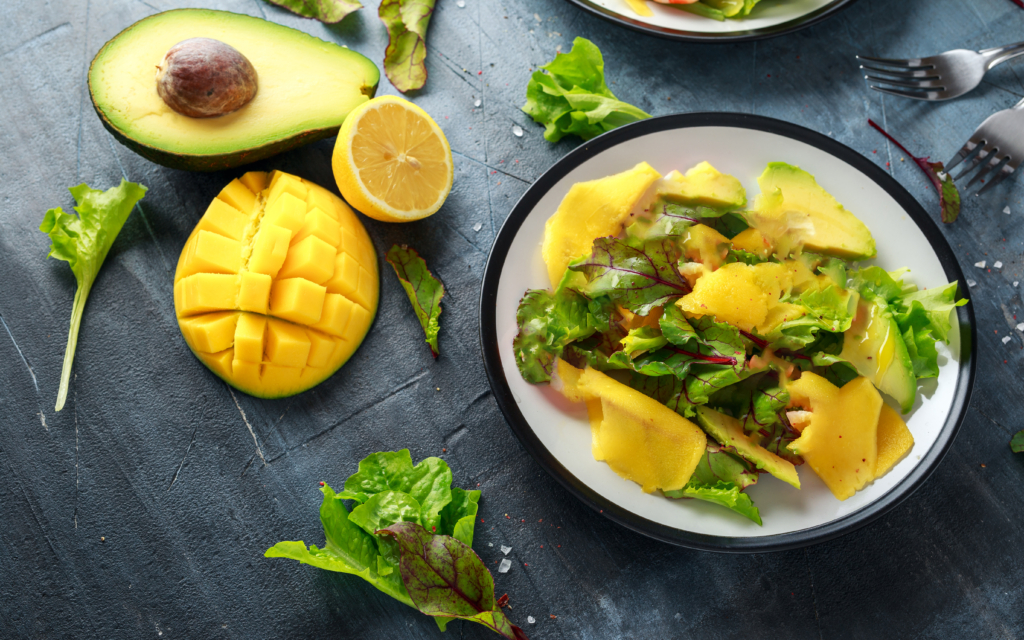
Delicious Ways to Use Mangoes
The versatility of mangos knows no bounds, and there’s a wealth of ways they can be eaten. From fresh mango salsa and mango smoothies to mango sticky rice and mango chutney, the possibilities are endless.
To make a refreshing mango smoothie, blend together a ripe mango, a banana, a cup of yogurt, and a cup of milk, adding a touch of honey and a pinch of cinnamon for an extra burst of flavor.
Or, if you’re in the mood for something savory, try making mango salsa by dicing a mango, red onion, jalapeno, and a handful of cilantro, then mixing the ingredients together and seasoning with salt, pepper, and lime juice.
In addition to being delicious, mangoes are a great source of vitamins A and C, as well as dietary fiber. They are also low in calories and fat, making them a healthy snack or addition to any meal.
The Impact of Mango Season on Florida’s Economy
Mango season in South Florida plays a significant role in the state’s economy, particularly in Miami-Dade County. With thousands of acres of mango trees, Florida’s mango industry provides jobs and income for local growers of tropical fruits and the businesses that sell and use them.
By supporting the local mango industry, we help ensure the sustainability of this delicious fruit and its positive impact on the community.
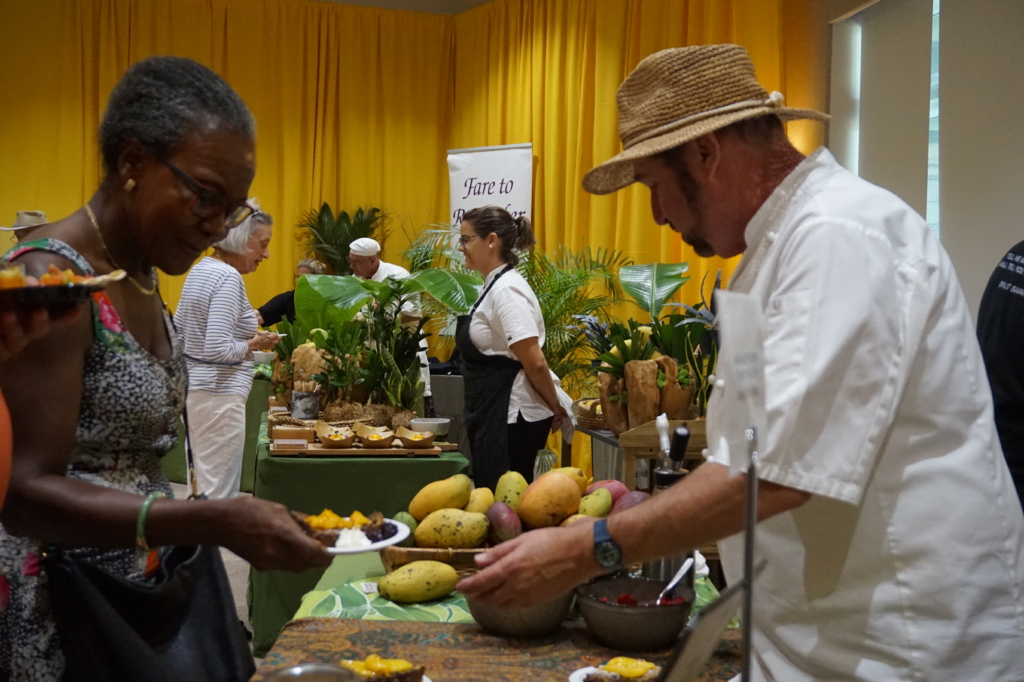
Fairchild Tropical Botanic Garden’s Mango Events
Florida’s mango season is a time of celebration, and what better place to honor the beloved fruit than at the Fairchild.
Every year during mango season, Fairchild hosts the Mango Festival, a two-day extravaganza that pays tribute to mangos, featuring mango fruit tasting, smoothies, lectures, a Sunday brunch, and more. Held annually for more than 30 years, the Mango Festival takes place in July and attracts mango enthusiasts from all over the world.
The Mango Brunch offers a delightful array of mango-inspired dishes prepared by some of Miami’s best chefs, providing the perfect opportunity to eat the best mangoes available while celebrating Florida’s mango heritage.
Fairchild is home to The Tropical Fruit program and one of the world’s largest mango collection. Come experience the joy of the mango harvest this July 13 & 14 at Fairchild Tropical Botanic Garden in Miami, Florida.
Mango Festival in Miami: Prepare for Next Year!
Preserving the Mango Harvest
While juicy, fresh mangos are available during the year, local mangos are generally unavailable in winter. For mango growers and aficionados alike, preserving the bountiful harvest after the summer is another way to get the most out of the crop. To ensure that the delicious taste of Florida mangos can be eaten during winter months, growers use various methods such as freezing, canning, and drying.
Freezing mangos involves washing, peeling, and cutting the fruit into cubes or slices, then placing them in a single layer on a baking sheet and freezing for two-to-three hours before transferring them to a freezer-safe container.
Canning mangos requires boiling the fruit in a pot, packing it into sterilized jars, and sealing the jars before processing them in a boiling water bath.
Drying mangos involves placing sliced mangos on a baking sheet in the oven at the lowest temperature setting for four-to-six hours until dry and leathery.
By preserving the mango harvest, we ensure that the delightful taste of Florida mangos can be savored throughout the year, well into the winter months.
Frequently Asked Questions about Mangos
What months are best for mangos?
For the freshest, most flavorful Florida mangos, May through October is the best time to enjoy mangos in their peak season.
Do mangos grow year-round in Florida?
Mangos are a Florida favorite, and even though they may not be available in winter and early spring, Floridians enjoy them from May through October. Freezing, canning or drying mango fruit is a good way to enjoy them year-round.
What is the sweetest mango in Florida?
Taste the sweetness of a Kent mango! Believed to be the sweetest mango in Florida. Kents are juicy and packed with flavor and sure to tantalize your taste buds.
